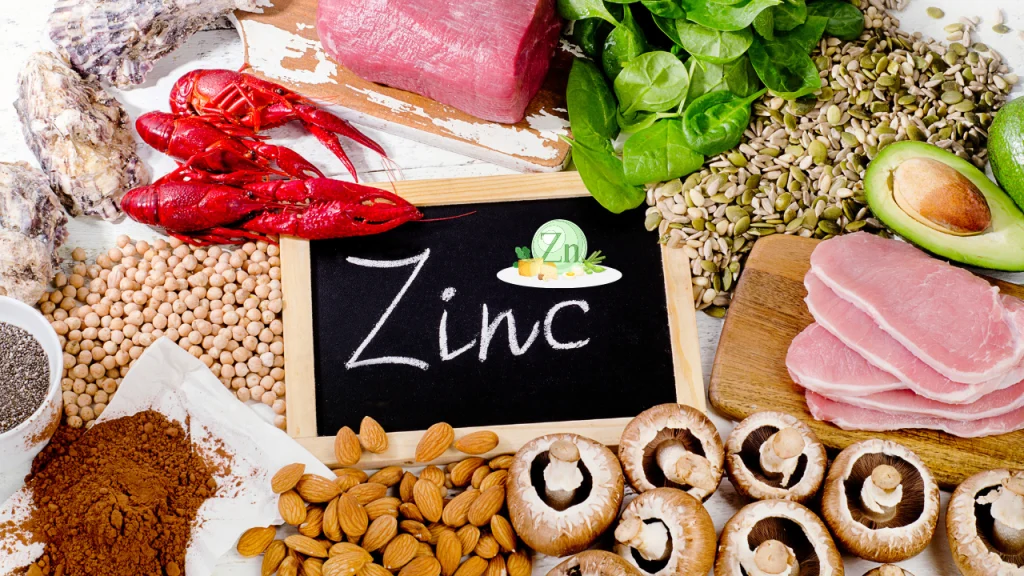We all want to feel our best, right? And a big part of that is making sure we’re getting enough of the good stuff our bodies need. Zinc is one of those things. It does a lot, from helping our immune system work to keeping our senses sharp. But where do we actually get it from? We’ve put together a list of some of the best zinc-rich foods out there to help us all stay on track with our health goals.
Key Takeaways
- Oysters are packed with zinc, offering the most per serving.
- Beef and crab are also excellent sources of this important mineral.
- Plant-based options like pumpkin seeds and oats provide a good amount of zinc.
- Dairy products such as cheese and milk contribute to our daily zinc intake.
- Including a variety of these zinc-rich foods in our diet supports overall well-being.
► Table of Contents
1. Oysters
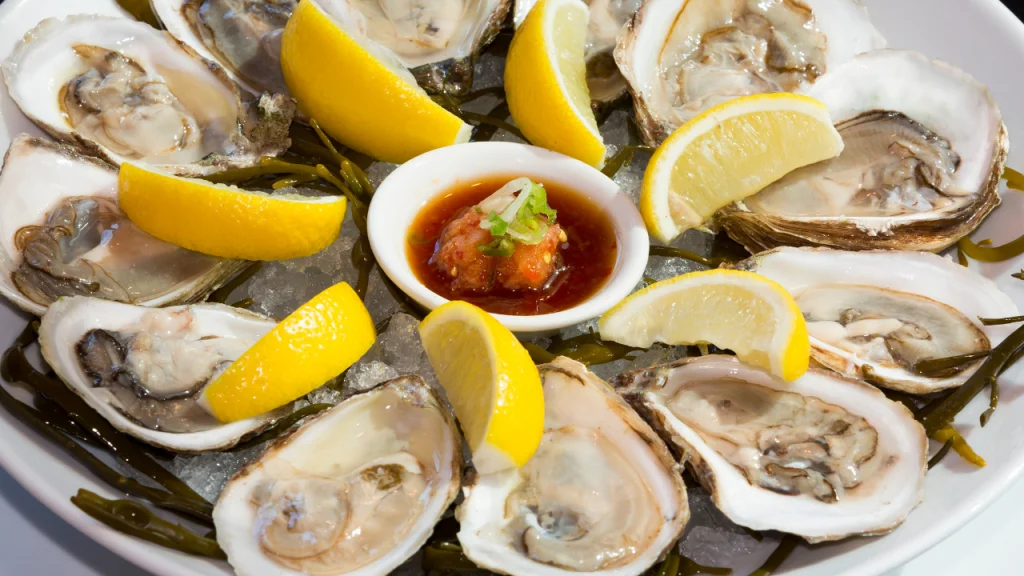
People also search for: zinc rich foods vegetarian, zinc rich foods chart, Zinc rich fruits, zinc rich foods for skin, zinc rich fruits and vegetables, Magnesium-rich foods, Zinc supplement, Zinc deficiency symptoms
When we talk about getting enough zinc, oysters really stand out as one of the absolute best foods for zinc intake. Seriously, these little guys pack a serious punch when it comes to nourishment with zinc. We’re talking about a significant amount of zinc in just one serving, making them a top contender among natural zinc sources. For anyone looking to boost their dietary zinc intake, oysters are definitely worth considering.
Here’s a look at how oysters stack up:
| Food Type | Serving Size | Zinc (mg) | % Daily Value |
| Eastern Oysters, farmed, raw | 3 ounces | 32.0 | 291% |
| Pacific Oysters, cooked | 3 ounces | 28.2 | 256% |
Oysters are a powerhouse for zinc, offering well over the daily recommended amount in a single serving. This makes them an excellent choice for ensuring you’re getting enough zinc from your diet.
It’s pretty amazing how much zinc you can get from oysters. This mineral plays a role in a lot of bodily functions, so focusing on dietary zinc sources like oysters can really help with overall health. If you’re trying to increase your dietary zinc intake, adding oysters to your meal plan is a straightforward way to do it.
Recommended Articles 👇
👉 The Hidden Vitamin and Mineral Gaps That Might Be Blocking Your Weight Loss
👉 You Have This Resistance; That’s Why You’re Not Losing Weight.
2. Beef
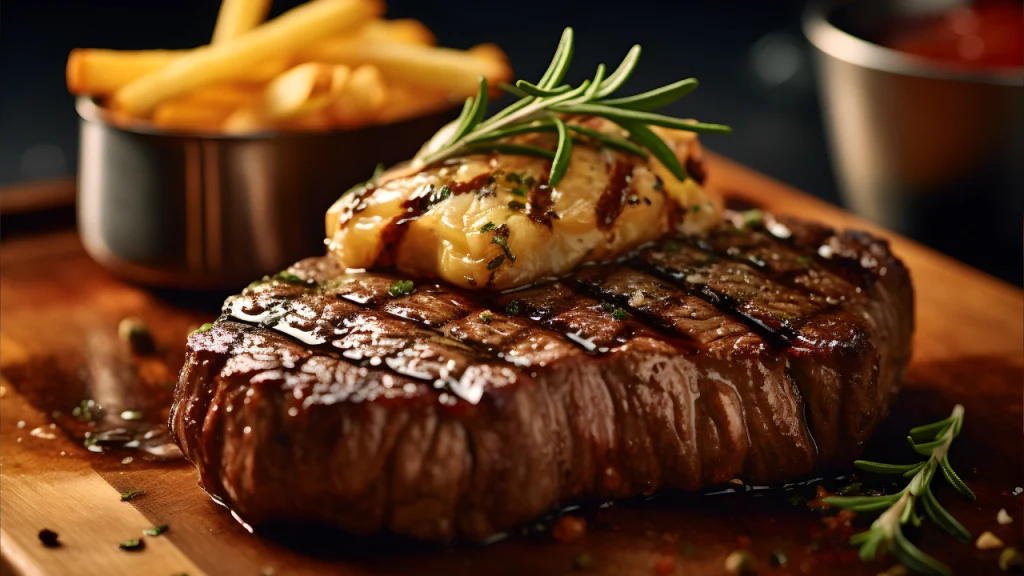
People also search for: zinc rich foods vegetarian, zinc rich foods chart, Zinc rich fruits, zinc rich foods for skin, zinc rich fruits and vegetables, Magnesium-rich foods, Zinc supplement, Zinc deficiency symptoms
When we talk about getting enough zinc, beef often comes up, and for good reason. It’s a really common food in many diets, and it packs a good amount of zinc. For a standard 3-ounce serving of roasted bottom sirloin, we’re looking at about 3.8 milligrams of zinc. That’s a pretty solid contribution to our daily needs.
It’s interesting to note that while oysters might have more zinc per ounce, beef is a major source for many people in the US simply because we eat it more often. So, if you’re a regular beef eater, you’re likely getting a good chunk of your zinc from it without even thinking about it.
Zinc Content in Beef
Here’s a quick look at how different cuts of beef stack up:
| Cut of Beef | Serving Size | Zinc (mg) | % Daily Value* |
| Bottom Sirloin, Roasted | 3 ounces | 3.8 | 35% |
*Note: Daily Values are based on a 2,000-calorie diet. Your daily values may be higher or lower depending on your calorie needs.
Why Beef is a Good Source
Beef is a great source of zinc because the zinc in animal products is generally easier for our bodies to absorb. This is different from plant-based foods, which sometimes have things called phytates that can make it harder for us to take in the zinc. So, while beans and nuts have zinc, the zinc from beef is more readily available for us to use.
We often hear about needing zinc for our immune system and for cell growth. Including foods like beef in our meals can help us meet those needs without a lot of fuss. It’s just a straightforward way to get a nutrient that’s pretty important for keeping our bodies running well.
Zinc Supplement Review 👇
👉 Best Zinc Supplements in 2025, Recommended by Dietitians
3. Pumpkin Seeds
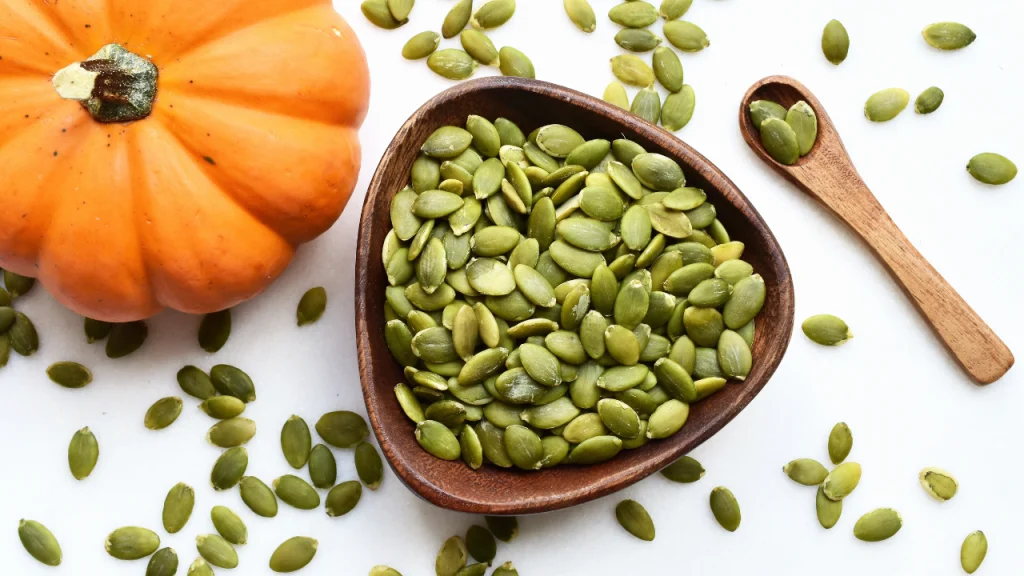
People also search for: zinc rich foods vegetarian, zinc rich foods chart, Zinc rich fruits, zinc rich foods for skin, zinc rich fruits and vegetables, Magnesium-rich foods, Zinc supplement, Zinc deficiency symptoms
We’re talking about pumpkin seeds, also known as pepitas, and they’re a really solid choice if you’re looking for more foods high in zinc. They’re small, but they pack a good punch when it comes to this important mineral. You can eat them roasted, either plain or seasoned, and they make a great snack or addition to salads and other dishes. It’s easy to forget about them, but they’re definitely worth keeping in mind for your diet.
Nutritional Breakdown
When we look at the numbers, a 1-ounce serving of roasted pumpkin seeds gives us about 2.2 milligrams of zinc. That’s a decent amount, especially if you’re trying to avoid zinc deficiency symptoms or just boost your overall intake. It’s one of those foods that’s easy to incorporate without a lot of fuss.
Why Pumpkin Seeds are Great
- Convenience: They’re ready to eat right out of the bag.
- Versatility: Sprinkle them on yogurt, add them to trail mix, or blend them into smoothies.
- Nutrient Density: Besides zinc, they also offer magnesium, iron, and healthy fats.
It’s pretty amazing how such a small seed can contribute so much to our daily nutrient needs. They’re a simple way to get more zinc into our meals.
4. Crab
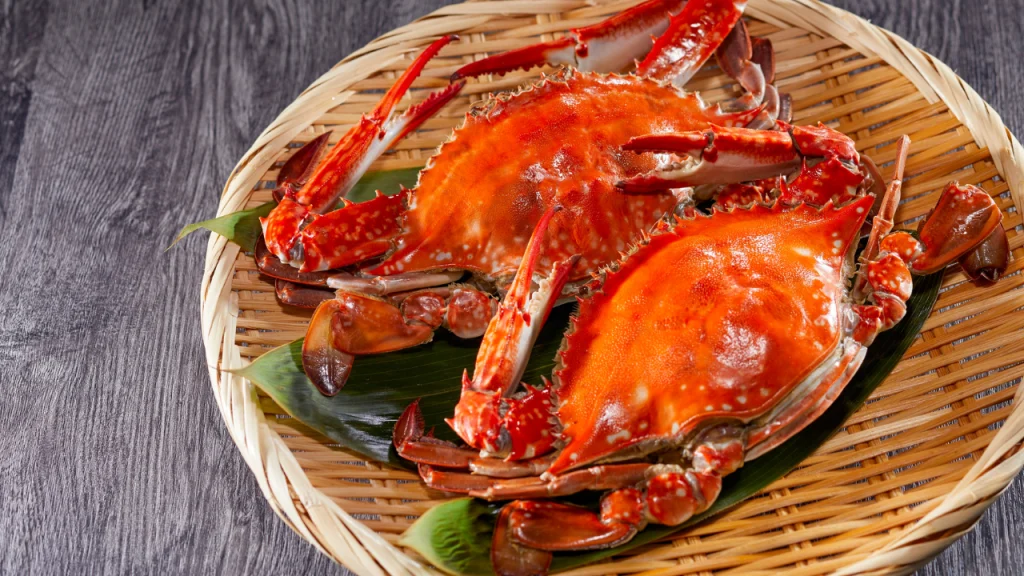
People also search for: zinc rich foods vegetarian, zinc rich foods chart, Zinc rich fruits, zinc rich foods for skin, zinc rich fruits and vegetables, Magnesium-rich foods, Zinc supplement, Zinc deficiency symptoms
When we talk about getting enough zinc, crab is another solid choice to consider. It’s not quite as packed with zinc as oysters or beef, but it still holds its own. A typical serving of cooked crab, around 3 ounces, can give us a decent amount of this important mineral. It’s a tasty way to add zinc to our diet, especially if we enjoy seafood.
Here’s a quick look at how crab stacks up:
| Food | Serving Size | Zinc (mg) | % Daily Value |
| Blue Crab | 3 ounces | 3.2 | 29% |
It’s good to remember that different types of crab might have slightly different amounts, but generally, it’s a reliable source. We can enjoy it steamed, baked, or in crab cakes, and it contributes nicely to our daily zinc intake.
5. Oats
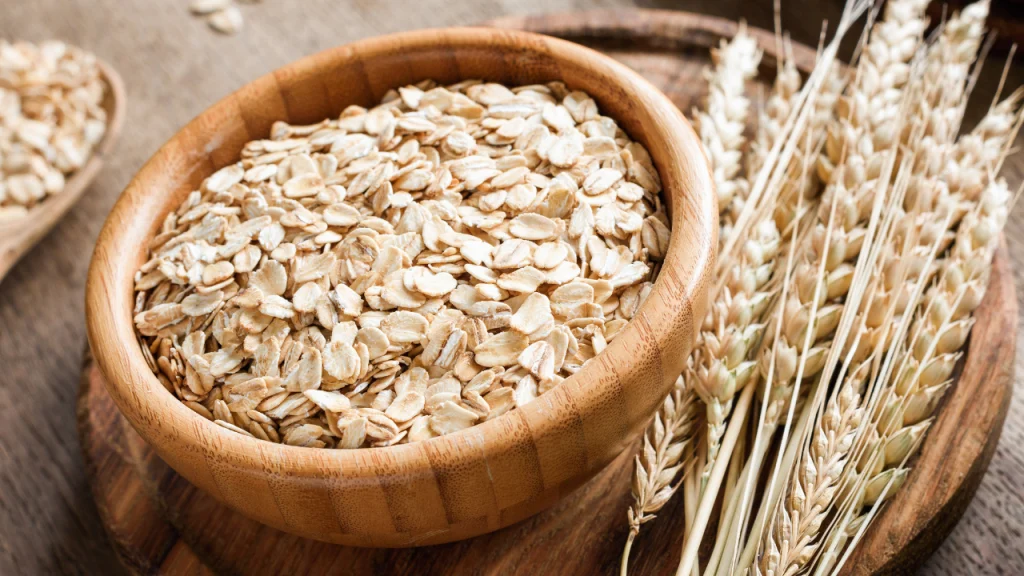
People also search for: zinc rich foods vegetarian, zinc rich foods chart, Zinc rich fruits, zinc rich foods for skin, zinc rich fruits and vegetables, Magnesium-rich foods, Zinc supplement, Zinc deficiency symptoms
We often think of oats as a breakfast staple, and for good reason. They’re easy to prepare and versatile. Beyond just being a good source of fiber, oats also contribute a decent amount of zinc to our diets. A cup of cooked, unenriched oats provides about 2.3 milligrams of zinc. While this might not seem like a huge amount compared to oysters or beef, it adds up, especially if you eat oatmeal regularly.
Zinc Content in Oats
- A standard serving of cooked oats (about 1 cup) contains roughly 2.3 mg of zinc.
- This amount can vary slightly depending on whether the oats are enriched or unenriched, and how they are prepared.
- For those looking to boost their zinc intake through plant-based foods, oats are a solid choice.
Oats are a good option for getting zinc, particularly for people who follow vegetarian or vegan diets. They offer a way to get this mineral without relying on animal products. Plus, they’re pretty filling, which is always a bonus for breakfast.
6. Cheese
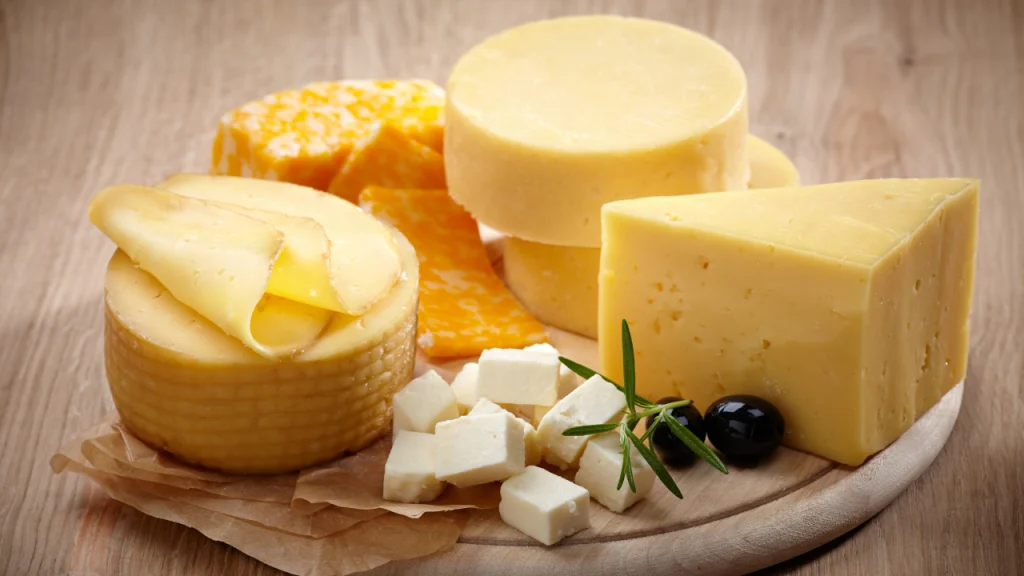
People also search for: zinc rich foods vegetarian, zinc rich foods chart, Zinc rich fruits, zinc rich foods for skin, zinc rich fruits and vegetables, Magnesium-rich foods, Zinc supplement, Zinc deficiency symptoms
We often think of cheese as a source of calcium, but it also contributes a decent amount of zinc to our diet. While it might not reach the sky-high levels found in oysters or beef, cheese is a readily available and tasty way to get some of that important mineral.
Cheddar cheese, for instance, offers about 1.5 milligrams of zinc in a 1.5-ounce serving. That’s a good chunk of the daily recommended intake, especially when you consider how many ways we can enjoy cheese.
Here’s a quick look at how different cheeses stack up:
- Cheddar: Around 1.5 mg per 1.5 oz.
- Swiss: Typically offers a similar amount to cheddar, maybe a bit more depending on the aging process.
- Mozzarella (part-skim): Generally has a bit less, around 0.9 mg per 1.5 oz.
Remember that the zinc content can vary based on the type of cheese and how it’s made. Harder, aged cheeses often concentrate more nutrients, including zinc, compared to softer, fresh cheeses.
So, whether it’s sprinkled on pasta, melted into a sandwich, or just enjoyed on its own, cheese is a satisfying way to boost our zinc intake.
7. Sardines
People also search for: zinc rich foods vegetarian, zinc rich foods chart, Zinc rich fruits, zinc rich foods for skin, zinc rich fruits and vegetables, Magnesium-rich foods, Zinc supplement, Zinc deficiency symptoms
We often think of seafood as a great source of omega-3s, but some types also pack a good amount of zinc. Sardines, especially the kind canned in oil with the bones included, are a decent option. While they don’t quite reach the zinc levels of oysters or beef, they still contribute to our daily intake.
A 3-ounce serving of canned sardines, drained, provides about 1.1 mg of zinc. That’s around 10% of the daily value for most adults. It’s not a massive amount, but when you’re eating them regularly as part of a varied diet, it adds up. Plus, you get the added benefits of calcium from those edible bones and those healthy omega-3 fatty acids we just talked about.
Here’s a quick look at how sardines stack up against some other zinc sources:
- Oysters (3 oz, raw): ~32 mg
- Beef (3 oz, roasted): ~3.8 mg
- Crab (3 oz, cooked): ~3.2 mg
- Pumpkin Seeds (1 oz, roasted): ~2.2 mg
- Oats (1 cup, cooked): ~2.3 mg
- Sardines (3 oz, canned in oil, with bone): ~1.1 mg
It’s worth noting that the bioavailability of zinc from animal sources like sardines is generally higher than from plant-based foods. This means our bodies can absorb and use the zinc from sardines more easily.
8. Milk
People also search for: zinc rich foods vegetarian, zinc rich foods chart, Zinc rich fruits, zinc rich foods for skin, zinc rich fruits and vegetables, Magnesium-rich foods, Zinc supplement, Zinc deficiency symptoms
We often think of milk as a good source of calcium and vitamin D, but it also contributes a decent amount of zinc to our diets. While it might not pack the same punch as oysters or beef, milk is a widely consumed food, making it a significant contributor to overall zinc intake for many people.
A standard 1-cup serving of 1% milk provides about 1.0 mg of zinc, which is roughly 9% of the daily value. This makes it a helpful addition, especially for those who might not regularly eat meat or seafood.
Zinc Content in Milk
- Milk, 1% milkfat, 1 cup: Contains approximately 1.0 mg of zinc.
- This amount represents about 9% of the Daily Value (DV) for zinc.
- Other types of milk, like whole milk or skim milk, will have similar zinc content, though fat content can slightly alter nutrient density.
Dairy products, including milk, are noted as containing zinc. While plant-based sources like beans and nuts also have zinc, the body absorbs it less effectively due to compounds called phytates. Milk, being an animal product, generally has better zinc bioavailability.
9. Peanuts
People also search for: zinc rich foods vegetarian, zinc rich foods chart, Zinc rich fruits, zinc rich foods for skin, zinc rich fruits and vegetables, Magnesium-rich foods, Zinc supplement, Zinc deficiency symptoms
Peanuts are a pretty common snack, and it turns out that they offer a decent amount of zinc. We often think of them as just a source of protein or healthy fats, but they contribute to our daily zinc intake too. A one-ounce serving, which is about a small handful, gives us a good start.
While they aren’t as packed with zinc as oysters or beef, their accessibility and versatility make them a valuable addition to our diet. You can eat them roasted, raw, or even as peanut butter. Just be mindful of added sugars or excessive salt in some processed versions.
Here’s a look at how peanuts stack up:
- Dry Roasted Peanuts (1 ounce): Provides about 0.8 mg of zinc, which is roughly 7% of the daily value.
- Peanut Butter (2 tablespoons): Offers a similar amount, around 0.6 mg, depending on the brand.
It’s worth noting that peanuts, like other legumes and grains, contain phytates. These compounds can bind to zinc in our digestive system, making it a bit harder for our bodies to absorb all of it. So, while peanuts are a good source, pairing them with foods that have easily absorbed zinc, like meat or seafood, can help maximize our intake.
10. Eggs
We often overlook the humble egg, but it’s a pretty decent source of zinc. While it might not pack the same punch as oysters or beef, a large egg provides about 0.6 mg of zinc, which contributes around 5% of the daily value. This makes eggs a convenient way to add a little extra zinc to our diet, especially since they’re so versatile. We can scramble them, fry them, or boil them – they fit into almost any meal.
Including eggs in our diet regularly can help us meet our daily zinc needs, which is important for a healthy immune system.
Here’s a quick look at the zinc content in a large egg:
| Nutrient | Amount per Large Egg |
| Zinc | 0.6 mg |
It’s worth noting that zinc from animal sources like eggs is generally well-absorbed by our bodies. This is different from plant-based sources, which can sometimes have compounds that make zinc a bit harder to absorb. So, while we’re thinking about zinc for immune system support and overall health, don’t forget about eggs!
Wrapping Up Our Zinc Journey
So, we’ve talked a lot about zinc and why it’s pretty important for our bodies. We saw that things like oysters and beef are packed with it, but even if we don’t eat those, there are other good options like pumpkin seeds and oats. It seems like most of us in the U.S. get enough zinc from our food, but it’s still good to know where to find it.
Paying attention to what we eat can help us make sure we’re getting what we need for our immune systems, healing, and overall well-being. We should aim for a balanced diet, and if we’re ever worried about our zinc levels, talking to a doctor or a dietitian is always a smart move.
Frequently Asked Questions
Why is zinc important for us?
We need zinc for our bodies to work right! It helps us grow, keeps our immune system strong, and even helps us taste and smell. It’s like a tiny helper for lots of important jobs in our bodies.
What are the very best foods for zinc?
Oysters are like the champions of zinc! But we can also get a good amount from yummy foods like beef, pumpkin seeds, crab, and even oats. Lots of different foods have zinc, so we have choices.
Is zinc easier to get from meat or plants?
It’s true, meat and seafood usually have more zinc than our bodies can easily use. Foods like lentils, nuts, and seeds also have zinc, but sometimes it’s a little harder for our bodies to grab it all. That’s why eating a variety of foods is a good idea.
Do most people get enough zinc?
Most people in the U.S. get enough zinc from the food they eat. However, some folks might need to pay extra attention, like older adults, people who don’t eat many animal products, or those with certain tummy troubles. If you’re worried, it’s always best to ask a doctor or a food expert.
What happens if we don’t get enough zinc?
Not getting enough zinc can make it harder for cuts to heal, might affect your taste or smell, and can make your immune system a bit weaker. For kids, it could slow down their growth. But don’t worry too much, these signs could be from other things too, so a doctor can check.
Should we take zinc supplements?
Generally, it’s best to get zinc from food. Taking too much zinc from supplements can actually cause problems, like messing with how your body uses iron. It’s usually only recommended if a doctor or a registered dietitian says you really need it.
People also search for: zinc rich foods vegetarian, zinc rich foods chart, Zinc rich fruits, zinc rich foods for skin, zinc rich fruits and vegetables, Magnesium-rich foods, Zinc supplement, Zinc deficiency symptoms
Syker Reid, the dynamic founder of Syktohealth, is a force in the health and fitness realm. Drawing on personal weight loss triumphs, he's committed to helping others achieve their health goals. With a degree in Exercise Science and Nutrition and a Certified Personal Trainer title under his belt, Reid's advice is both practical and science-backed.
Reid has grown Syktohealth into a trusted platform for weight loss, resonating with thousands seeking solid, achievable advice. His assertive yet approachable style, coupled with his professional knowledge and personal experience, makes him a credible guide for your weight loss journey. Under Reid's leadership, Syktohealth continues to empower individuals towards a healthier life.
